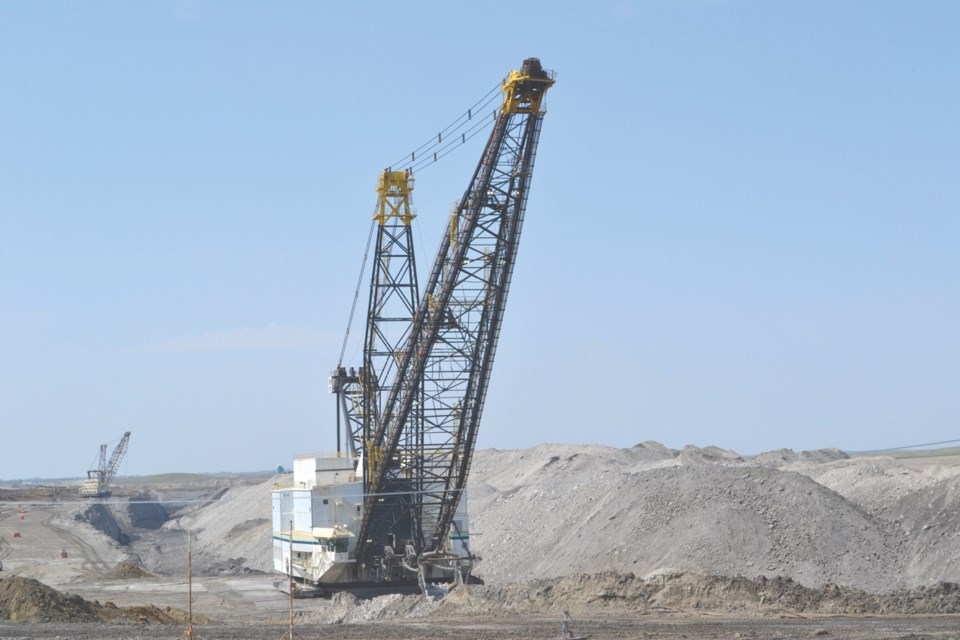With the future of coal-fired power generation in Saskatchewan very much in question, one of the key considerations is how much does the fuel, be it coal or natural gas, actually cost the people of Saskatchewan?
And how much is paid/collected in royalties from coal?
The provincial budget does not separately list revenue from coal. The 2019-20 budget listed $1,826,800 in total non-renewable resource revenue for this year. That includes $46 million for Crown land sales at $691.1 million for oil and gas, $618.6 million for potash, $385 million for resource surcharge, and $85.5 million for “other.” There are no separate line items for royalties from coal, uranium, gold or diamonds.
Saskatchewan is in the unique position in that the Crown owns the power utility, and much of the coal it consumes. The royalties on the Crown mineral rights-coal consumed are essentially paid from one arm of government, SaskPower, to another, the treasury.
After several months of asking various officials within SaskPower and government without getting very far, Estevan MLA and Minister of Government Relations Lori Carr stepped up and dug up those numbers regarding coal, via a request to the responsible minister’s office. The information came from SaskPower.
She replied that the royalty in 2018 was an average $3.93 per tonne. Asked what the total royalty collected per year by the province was, she replied the royalty paid and adjustments accrued in 2018, was $32.7 million.
As for whose coal is being burned, Crown or freehold, Carr reported the 2018 breakdown was 72.3 per cent Crown, and 24.7 per cent freehold.
SaskPower’s 2018-19 annual report lists the following for fuel and purchased power: $307 million for natural gas, up from $289 million in 2017-2018. Coal’s costs were $296 million in 2018-19, up from $275 million in 2017-18.
“Gas costs include the fuel charges associated with the electricity generated from SaskPower-owned gas-fired facilities as well as gas-fired power purchase agreement facilities. Gas and coal costs include federal carbon charges of $19 million implemented on Jan. 1, 2019,” the annual report said.
The report notes that for inventory consumed in 2018-19, there was $183 million in coal and $174 million in natural gas. The previous year saw $186 million in coal and $163 million in natural gas. The report listed $10 million for inventory for coal in 2018-19, a repeat of the $10 million for the previous year. Natural gas inventory was also $10 million in 2018-19, up from $9 million in 2017-18. Natural gas market revaluation saw a negative $6 million in 2018-19, and a negative $5 million from 2017-18.
SaskPower’s coal purchase contracts are listed as $179 million for 2019-20, then $225 million (2020-21), $231 million (2021-22), $236 million (2022-23) and $237 million (2023-24).
SaskPower’s natural gas purchase contracts are listed as $129 million for 2019-20, then $124 million (2020-21), $103 million (2021-22), $74 million (2022-23) and $58 million (2023-24).
This past year is the first year natural gas surpassed coal as the top producer of net electricity supplied. Natural gas supplied 10,603 gigawatt hours (GWh) in 2018-19, up in a continual trend that has seen the number rise by rough 400 to 1,500 GWh per year since 2014.
On the other hand, coal supplied 10,286 GWh in 2018-19, down from 10,864 GWh the year before. Since 2014, coal has been essentially flat, supplying between 10,219 GWH (2014-15) to 10,967 GWh (2015-16).
Saskatchewan currently has net generating capacity of 1,839 megawatts from natural gas and 1,530 megawatts from coal. The distinction is that coal is considered baseload, while some of the natural gas capacity is for “peaking” and the rest is baseload.




